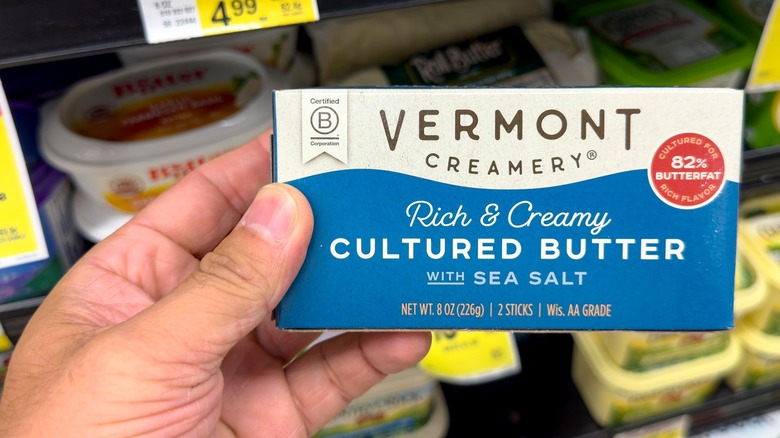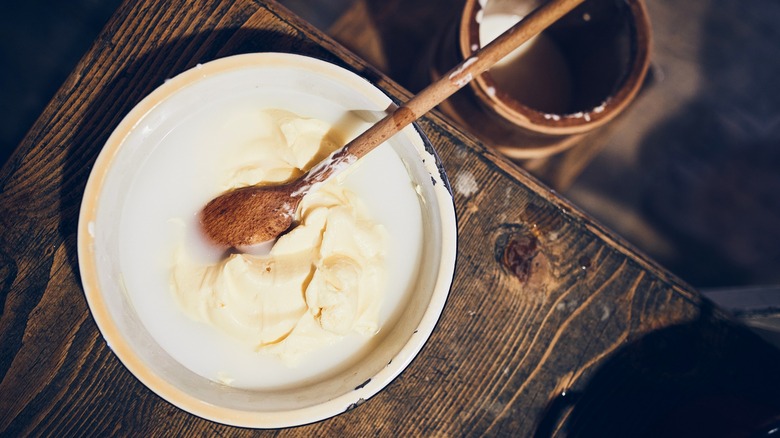What Makes Cultured Butter Different From The Regular Stuff?
While perusing the dairy section in the supermarket, you might have noticed cultured butter sitting adjacent to your favorite brand and wondered what exactly that meant. Is it a high-brow product or simply a marketing technique to make folks think it's fancy? The truth is that cultured butter is a step above traditional golden spreads because of how it's produced.
Regular butter is essentially just cream that's been churned until it thickens (and liquid is poured off in the form of buttermilk). During the process of making cultured butter, live bacterial cultures are added to that cream and allowed to ferment. This process is where this delicacy gets its elevated flavor. After the bacteria ferments for sometimes up to 20 hours, it gets churned until it solidifies. One could rightly say there's no such thing as bad butter, but the cultured variety boasts intricate cheesy and tangy notes that make other butters taste bland in comparison.
If you've ever seen the hit television program "The Bear," you may remember Carmy paying a small fortune for Orwellian butter from Vermont's Animal Farm Creamery. That flavorful product actually exists and is cultured, which is partly why the protagonist of the show uses it to create his haute cuisine. It is also true that cultured butter is typically more expensive than sweet cream butter you are likely used to purchasing.
All butter used to be cultured
Before refrigeration allowed us to store food long-term, bacteria often fermented naturally in butter. Once this dairy product could be made more quickly by utilizing cooler temperatures, the bacteria that enhanced the flavor couldn't work as quickly. Relatively higher temps also likely did a bit too much to encourage the growth of bacteria or other pathogens. Most popular brands these days consist of cream churned for as long as it takes to solidify, which results in sweet cream butter.
Today, cultured butter (which is often made with pasteurized dairy) is a unique product, although you can usually find it at your local grocery store. You could also make your own at home by mixing cultured buttermilk with cream. However, because of its inflated price, you might not want to use this butter for boiling corn. It is best reserved for culinary delicacies like baked goods, where you will be able to fully appreciate the impeccable, savory flavor. While you're at it, make sure the butter is at the right temperature for baking. After all, you wouldn't want to let any of your prized fermented cream go to waste.

